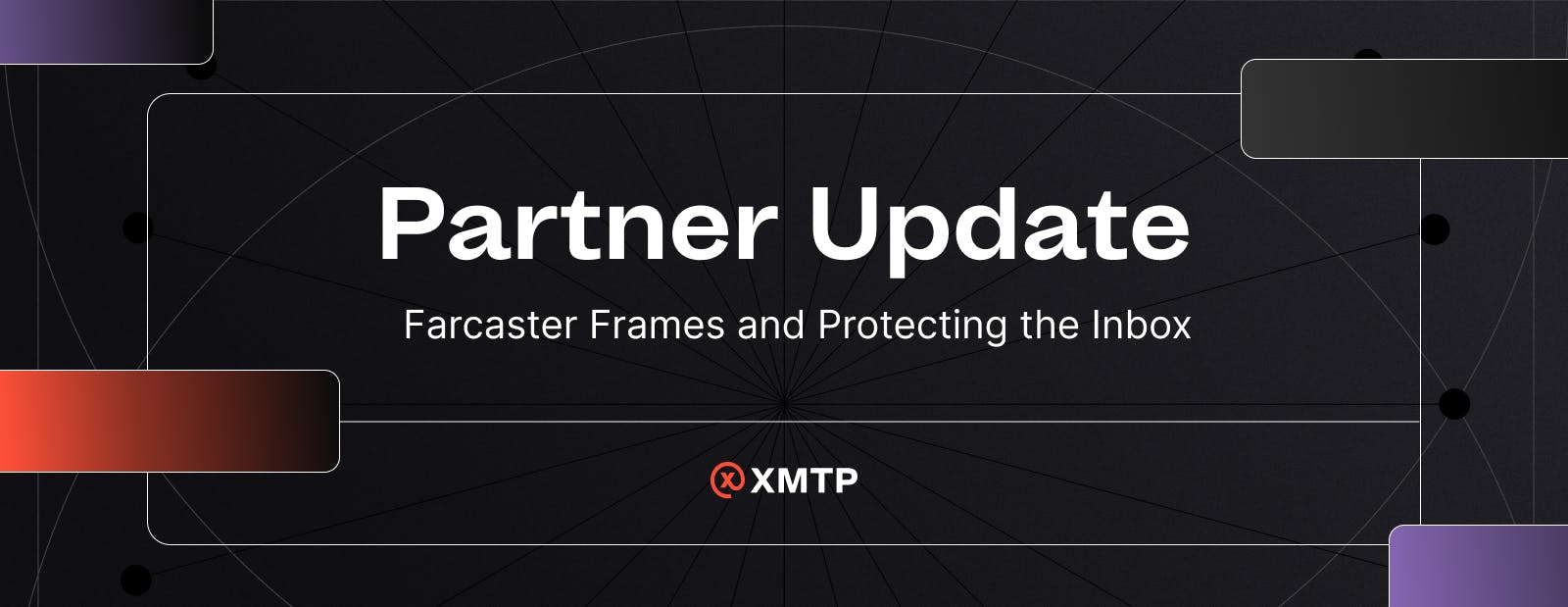
February Partner Update
Bringing Frames to private DMs, and protecting inboxes from spam.
What a week for the web3 community!
We’re excited to share some initiatives we’ve been working on that should add real value to what’s already happening in the space.
1/ Supporting Frames in XMTP
We see Farcaster’s launch of Frames this week as a big leap forward in the UX of web3. In reducing the friction for real interaction/transactions, they’ve created a primitive that lets creators and developers reach and engage with users where they are in social.
So we built a small taskforce at XMTP with one question: How can we help support and expand Frames as a primitive across web3? The answer is simple: add support for Frames in XMTP and create more reach for builders.
We publicly launched this exploration yesterday with a series of casts on Warpcast that hope to educate and inspire developers on how XMTP can extend support to Frames.
For example: picture minting on Farcaster, and tipping in private DMs.

Or bringing frames into DMs to easily buy merch.

In the coming days/weeks, we’ll continue to share ideas and would love your help in joining the conversation.
2/ Fighting Spam and Building Better Inboxes
Check out Airstack's documentation on how to leverage XMTP’s consent data to build better, safer inboxes, with greater protection against spam, and a main inbox protected by consent.

XMTP released a major protocol update that introduces consent protection at the protocol level. All major inboxes are currently adopting this standard to filter out spam, while working with Airstack to innovate on the best user experiences.
Consent preferences are stored privately in an encrypted consent list on the XMTP network. This list is controlled by the user, and only accessible by apps the user logs into.
By gaining access to this list, apps can then verify if a user has allowed or denied to receive messages from another address, and protect these preferences in their app.
This presents a fundamental shift in the way we communicate, one that is better for users, developers and businesses.
🤝 For users, it not only provides a much better user experience, — a user only has to block a sender once for it to be applied across all apps they use — but it also ensures that users maintain complete control over how their data is handled, with no intermediaries intercepting messages.
🌱 For apps, consent becomes a public good that developers can leverage and innovate on top of. Apps no longer have to trust other apps, they can trust the state of the network.
💌 As more apps plug in, a consent network is created which benefits businesses and brands as well, since their content is no longer buried amidst spam and can reach users who have truly opted in to receive it.

Frames are such a huge opportunity for developers to drive engagement. I love that they can then build a relationship through messaging, to drive retention. Such a cool flywheel.